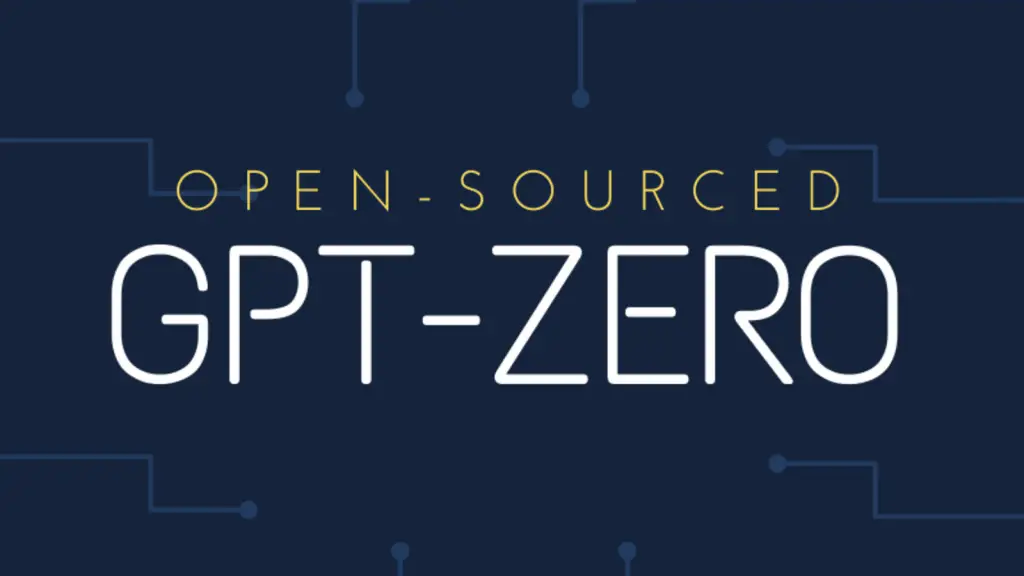
Are AI tools the future of academic integrity? Find out in our GPTZero Review Today.
Academia, once a stronghold of human intellectual endeavor, is now being infiltrated by AI-authored content. The increasing sophistication of AI writing technologies has given rise to concerns about authenticity and credibility in academia.
Students and academics face an unprecedented challenge: deciphering the origins of the content they encounter. This issue becomes even more significant when considering the potential implications for academic integrity, the foundation upon which scholarly work rests.
Table of Contents
I. Overview
This increasingly intricate landscape calls for innovative measures. Introducing AI plagiarism detection tools, such as GPTZero, into the academic sphere could provide the solution we need. Such tools can identify AI plagiarism.
They allow individuals to verify the authenticity of a text, effectively addressing the growing concerns surrounding AI-authored content in academia.
GPTZero, in particular, offers several features that make it an ideal choice for this task. It employs advanced algorithms and machine learning techniques to effectively distinguish between human and machine-generated content.
Moreover, it’s designed to adapt and learn from new AI writing patterns, ensuring it remains effective despite the ever-evolving nature of AI technologies.
This blog post aims to present a comprehensive review of GPTZero, providing an in-depth analysis of its features, benefits, limitations, and user experiences. Let’s find out whether GPTZero can help restore authenticity in academia.
II. Why Do We Need AI Detection Tools?
The need for AI detection tools is critical as we navigate a world where AI technologies play a significant role in AI content creation. Here is a list of reasons why we need these tools:
#1. Ensure the Authenticity of Content in the Digital Space
In an age of deepfakes and AI-written articles, determining the authenticity of digital content can be challenging. AI detection tools are needed to differentiate between human-generated content and AI-created information.
They provide a mechanism to verify the origin of the content, thus helping to maintain authenticity and trust in the digital space.
#2. Protect Academic Integrity
Academia relies heavily on the originality of ideas and content. As AI technologies become capable of producing scholarly articles, essays, and research papers, there’s a risk of these tools being misused, leading to breaches of academic integrity.
AI detection tools can help identify AI-authored content, thereby protecting academic integrity and ensuring that scholarly work remains a human endeavor.
#3. Promote Responsible Use of AI Technologies
As AI technologies grow more sophisticated and pervasive, it’s crucial to use these powerful tools responsibly. AI detection tools can help promote ethical use of AI by identifying instances of potential misuse.
By distinguishing between AI-generated and human-produced content, these tools can highlight the need for guidelines and regulations governing the use of AI in content creation.
#4. Prevent Disinformation and “Fake News”
AI can be a double-edged sword in a world grappling with the challenges of “fake news” and disinformation. While it can aid in information processing and pattern recognition, it can also be used to generate false or misleading content.
AI detection tools are crucial in these scenarios, helping identify and flag AI-generated disinformation.
#5. Nurture Informed Digital Citizens
In a digitally connected world, nurturing informed citizens who can discern between authentic and AI-generated content is essential.
AI detection tools can help achieve this by raising awareness of the extent to which AI is used in content creation, and by equipping individuals with the tools to verify the origins of digital content.
III. What is GPTZero?
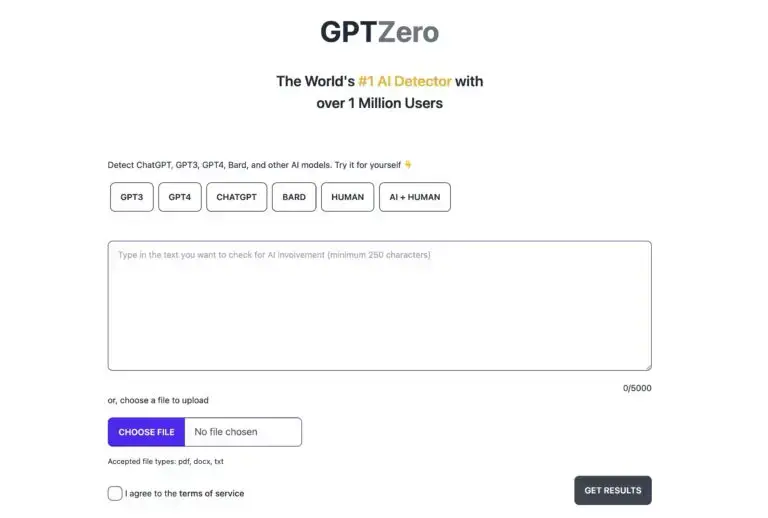
GPTZero is a cutting-edge AI detection tool designed to identify and differentiate between human-generated content and AI-authored content.
It represents a significant development in the field of AI technology, offering a robust solution to the challenges posed by the increasing sophistication and prevalence of AI-written content.
a. Detailed Description of GPTZero, Its Purpose, and How It Works
This AI detection tool uses modern algorithms to detect patterns characteristic of AI-generated content. By examining aspects such as linguistic nuances and subtleties in syntax, GPTZero identifies signs of AI intervention, setting it apart from human-authored content.
b. How Does GPTZero Stands out From Other AI Detection Tools
GPTZero’s distinguishing feature is its precision. Unlike other tools that rely heavily on superficial markers, GPTZero’s deep learning algorithms offer a more in-depth and reliable detection process, making it an exceptional tool in the market.
IV. What are the Key Features of GPTZero?
GPTZero is an impressive tool in the fight against AI-authored misinformation. Here is an in-depth exploration of GPTZero’s key features:
1. Advanced AI Detection Algorithm
At the core of GPTZero is its advanced AI detection algorithm. This sophisticated feature can analyze textual content and differentiate between human and machine-generated pieces.
The algorithm is trained on a vast corpus of data, including both human-written and AI-produced texts, allowing it to recognize subtle patterns and cues indicative of AI authorship.
2. Machine Learning Adaptability
One of the key strengths of GPTZero is its machine learning adaptability. It continually learns from new instances of AI-authored content, updating its detection patterns in response to the ever-evolving nature of AI writing technologies.
This feature ensures GPTZero stays relevant and effective, even as AI technologies advance and become more nuanced in their content generation.
3. User-friendly Interface
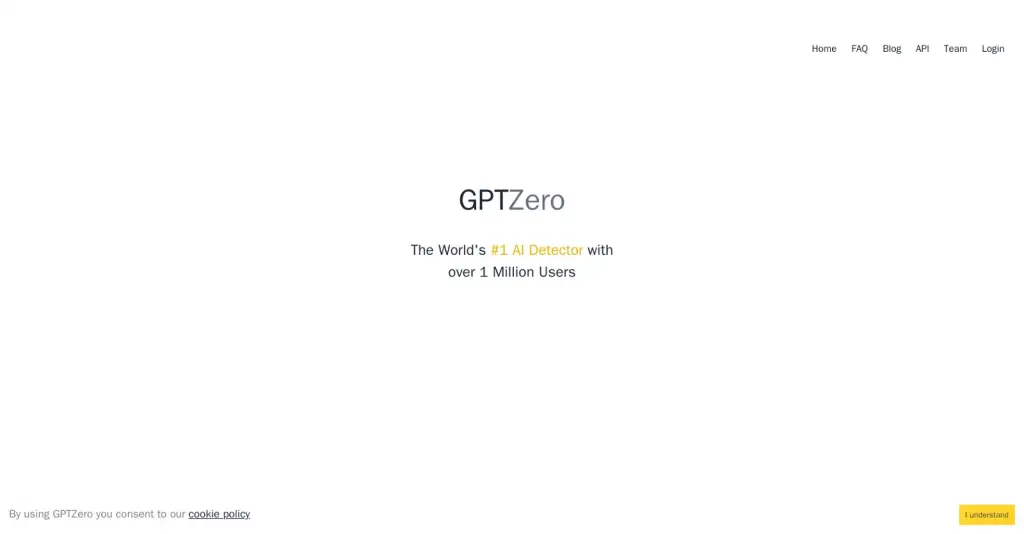
GPTZero is designed with user experience in mind. It features a simple, user-friendly interface that allows individuals, even without technical expertise, to use the tool effectively. Users can easily input text for analysis and receive clear, comprehensible results regarding the origin of the content.
4. Robust Reporting Features
GPTZero doesn’t just detect AI-written content, it also provides robust reporting features. When a text is analyzed, GPTZero offers a comprehensive report detailing the likelihood of AI involvement. This allows users to understand the degree of certainty with which the tool has determined the content’s origins.
5. Real-time Analysis
GPTZero is capable of real-time analysis, making it a practical tool in today’s fast-paced digital world. Whether you’re a student verifying an article for a research paper or a journalist ensuring the credibility of a source, GPTZero can provide quick and reliable results.
How Do These Features Contribute to Effective AI Detection
Each feature of GPTZero contributes to its overall efficiency in detecting AI-generated content. The combination of these features ensures thorough content analysis and reliable detection, significantly enhancing user trust and confidence in the digital space.
V. What Has Been My Personal Experience and How Did GPTZero Perform?

Performance Evaluation
To explore the capabilities of AI content detection, I utilized the GPTZero tool to evaluate its ability to identify AI-generated content accurately. For this experiment, I prompted ChatGPT-4 to write an article on the topic of autonomous cars and uploaded it to GPTZero.
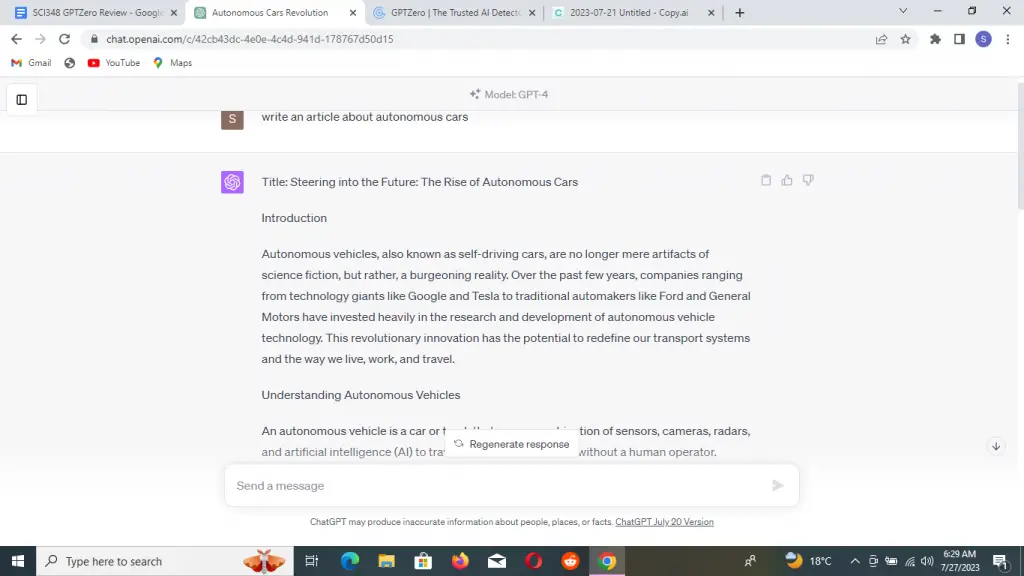
GPTZero impressed me with its detection capabilities. It promptly recognized that the article I provided was entirely written by AI. This showcased the tool’s proficiency in differentiating between human-generated content and AI-generated content.
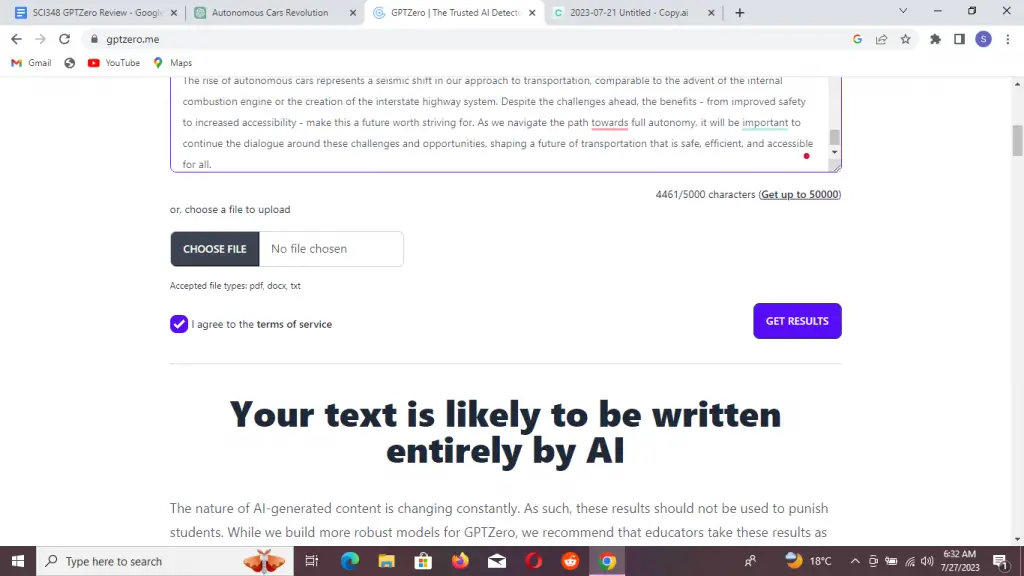
The tool’s accuracy in detecting AI-generated content was commendable. It correctly identified the entire article as AI-produced, providing me with a high level of confidence in its performance.
This capability is particularly valuable in scenarios where it is crucial to verify the authenticity of written material, especially as AI language models become more sophisticated and capable of generating human-like text.
To get the full picture, I decided to try GPTZero with a human written article. This time the tool identified the article as likely human–which is correct.

Overall Satisfaction
My experience with GPTZero as a web-based tool has been highly satisfying. Its impressive accuracy in detecting AI-generated content demonstrates the advancements in AI technology.
Being web-based offers convenient accessibility across devices, although occasional service issues may arise. Overall, GPTZero is a valuable resource for content creators, researchers, and anyone seeking to ensure content authenticity.
With its user-friendly interface and reliable AI detection capabilities, I wholeheartedly recommend GPTZero as an essential tool to maintain trust and credibility in the digital era.
VI. What are the Benefits of Using GPTZero in Academia?
AI detection tools like GPTZero have pivotal roles in the academic sphere, particularly in maintaining its integrity. Let’s delve into the specific advantages that GPTZero brings to academia.
#1. Ensuring Academic Honesty
GPTZero provides a reliable means to detect AI-authored content, helping educators and administrators maintain academic honesty.
By identifying any AI-generated essays, research papers, or assignments, the tool aids in discouraging students from submitting AI-produced work, thereby ensuring the integrity of their academic contributions.
#2. Enhancing Critical Evaluation Skills
Incorporating GPTZero into academia can help students develop a more critical approach towards information. By understanding that content can be AI-generated and learning to use detection tools, students may become more discerning consumers and evaluators of information.
#3. Preventing Misuse of AI Technologies
As AI-writing technologies become increasingly accessible, there is a risk of misuse. GPTZero can identify AI-generated content, alerting academia to any potential breaches of ethical guidelines concerning the use of AI. This helps to foster an environment that encourages responsible AI use.
#4. Supporting Peer-Review Processes
In the realm of scholarly publishing, GPTZero can be an invaluable tool in the peer-review process. It can help reviewers and editors confirm the authenticity of a manuscript, thus ensuring that only human-authored research is published and credited.
#5. Fostering Transparency and Trust
By being able to identify AI-generated content, GPTZero enhances the transparency of information in academia. This fosters a culture of trust among students, educators, and researchers, which is essential for productive academic discourse.
#6. Future-proofing Academic Integrity
AI technologies continue to evolve, making it imperative for academia to stay one step ahead. GPTZero, with its cutting-edge algorithms and machine learning capabilities, provides an effective means to safeguard academic integrity in the face of advancing AI technologies.
VII. How has GPTZero Impacted Various Industries Outside of Academia?

The influence of GPTZero extends beyond academia, touching various sectors that are pivotal to our society. This section explores how this advanced AI detection tool has impacted industries such as journalism, law, e-commerce, cybersecurity, and other industries.
Impact on Journalism and Media

GPTZero’s ability to detect AI-generated content has been transformative for journalism and media industries that rely heavily on credibility. With the rise of deepfakes and AI-written articles, the tool has helped maintain the integrity of news sources by identifying and flagging AI-produced content.
Influence on Legal Industry

The legal industry is another area where GPTZero has shown significant impact. The tool aids in distinguishing human-written legal documents from AI-generated ones.
This ensures the authenticity of contracts, affidavits, and legal decisions. It also prevents potential misinterpretation or misuse of AI-authored legal content.
Revolutionizing E-Commerce

In the e-commerce sector, GPTZero has improved the trustworthiness of product reviews by identifying and highlighting AI-generated reviews. This ensures consumers base their purchase decisions on genuine feedback, enhancing customer trust and satisfaction.
Enhancing Cybersecurity
Cybersecurity is yet another industry reaping the benefits of GPTZero. The tool assists in identifying AI-generated phishing emails or fraudulent messages, contributing significantly to proactive defense mechanisms and protecting users from potential threats.
Impact on the Entertainment Industry
GPTZero’s role is not limited to serious applications; it has also affected the entertainment industry. It aids in distinguishing between human and AI-written scripts, preserving artistic integrity in movies, TV shows, and theatrical performances.
VIII. What are the Limitations of GPTZero?
GPTZero provides a significant step forward in AI detection but has limitations. Awareness and understanding of these limitations are key to effectively using the tool and interpreting its results. Here are some of the shortcomings:
a . Adapting to Rapidly Evolving AI Technologies
While GPTZero is designed to recognize AI-generated content based on current technologies, the rapid evolution of AI presents a constant challenge.
As new models are developed, they may produce content that GPTZero doesn’t initially recognize. Constant updates and modifications are needed to keep up with the pace of AI advancement.
b. False Positives and Negatives
Like any detection tool, GPTZero is not infallible. There’s a chance of both false positives (identifying human-generated content as AI-created) and false negatives (failing to recognize AI-generated content). Though the developers of GPTZero work diligently to minimize these instances, they cannot be entirely eliminated.
c. Dependence on Computational Power
The complex algorithms used by GPTZero require substantial computational power. This might limit its use in environments with constrained resources or slow processing speeds, making it less accessible to some users.
d. Accessibility and User Experience
The interface and user experience of GPTZero may be challenging for individuals unfamiliar with AI technologies. Even though efforts are made to make the tool user-friendly, a certain degree of technical knowledge is required for effective use.
e. Potential Misuse
While GPTZero is designed to uphold academic integrity and verify content authenticity, it may be misused by individuals seeking to refine their AI-generated content to evade detection. As such, the tool’s effectiveness partly depends on users’ ethical application.
f. Limitations in Language and Context Understanding
Finally, like all AI, GPTZero has limitations in understanding nuanced language, context, and cultural references. This can impact the accuracy of its detection capabilities, particularly when dealing with complex or context-dependent content.
IX. How Does GPTZero Compare with Other AI Detection Tools?
As AI technologies advance and become increasingly incorporated into various sectors, the demand for tools capable of detecting AI-authored content has skyrocketed. Many AI detection tools have surfaced to meet this demand, each with their unique features and capabilities.
Among these tools, GPTZero stands out due to its unique attributes. This section delves into how GPTZero measures up against other AI detection tools in the market, evaluating its distinguishing features, advantages, and potential limitations.
#1. GPTZero’s Advanced Detection Capabilities
One of the major advantages of GPTZero is its advanced detection capabilities. It leverages state-of-the-art algorithms to distinguish between human and AI-authored content.
The tool has been trained on vast amounts of data, enabling it to identify even subtle patterns that distinguish AI-generated text. This high level of accuracy sets it apart from many other AI detection tools on the market.
We also found out that some tools like Originality AI, Content at scale AI detector, and Turnitin have more advanced AI content detection abilities. These tools offer premium packages with better results.
#2. Scalability of GPTZero
GPTZero shines in its scalability. Whether used for scanning a single document or an entire database, GPTZero maintains its speed and accuracy. This feature makes it particularly appealing to large academic institutions or research organizations that need to verify substantial amounts of content.
#3. Adaptability of GPTZero
GPTZero is designed to adapt and learn from new AI writing patterns. As AI writing technologies evolve, so does GPTZero. This characteristic ensures its ongoing effectiveness in detecting AI-authored content, making it a resilient tool in the rapidly advancing field of AI technologies.
#4. User-friendly Interface of GPTZero
Ease of use is another strength of GPTZero. Its user-friendly interface allows even non-tech-savvy individuals to use the tool effectively. This accessibility distinguishes GPTZero from other tools that may require a certain level of technical expertise.
#5. Affordability of GPTZero
Perhaps one of GPTZero’s most attractive features is that it’s entirely free. Unlike other AI detection tools that often come with subscription or purchase costs, GPTZero provides its robust suite of features without a price tag.
This accessibility makes it an unrivaled choice for individuals and institutions looking for a cost-effective yet powerful tool to tackle the challenge of AI-authored content.
X. What Has Been the User Experience with GPTZero?
A. Ease of Use
Users have reported that GPTZero is intuitive and user-friendly. Its interface is straightforward and easy to navigate, even for those who are not particularly tech-savvy. This ease of use enhances user experience and promotes wider adoption.
B. Accuracy and Reliability
One of the critical factors that determine user experience is the tool’s accuracy. Users have praised GPTZero for its high accuracy in identifying AI-authored content. Its reliability, even when dealing with newer, more sophisticated AI models, has been a major plus in the eyes of its users.
C. Speed of Detection
Time efficiency is another factor that significantly impacts user experience. GPTZero users have found the speed at which it detects AI-generated content impressive. This quick turnaround time makes GPTZero practical for real-time detection and allows users to validate content promptly.
D. Integrations and Compatibility
Users have appreciated GPTZero’s compatibility with various platforms and its seamless integration with other applications. This compatibility and integration capability make GPTZero more versatile and convenient for users who work across multiple platforms.
E. Customer Support
Good customer support significantly contributes to a positive user experience. GPTZero users have highlighted the proactive and responsive customer support team that promptly addresses their queries and concerns. This level of support has increased user confidence and satisfaction with GPTZero.
F. Instances of False Positives and Negatives
Despite the numerous positives, it’s important to acknowledge that GPTZero, like any AI tool, isn’t infallible. Users have reported instances of false positives, where human-written content was flagged as AI-generated, and false negatives, where AI-generated content was missed.
While these occurrences have been relatively infrequent, they can lead to inaccurate assumptions and potential confusion.
G. Addressing Misclassifications
GPTZero developers have been responsive to feedback regarding misclassifications. They’ve acknowledged that the tool, while sophisticated, might make occasional mistakes due to the complex nature of language and the increasing sophistication of AI writing models.
They are continuously working to improve the tool’s accuracy and reduce the likelihood of such errors.
XI. How is GPTZero Priced, and Where Can Interested Parties Access this Tool?
Understanding the Pricing Model of GPTZero
Currently, GPTZero is provided at no cost. This free availability ensures the broadest possible access, allowing individuals, academics, and institutions to use the tool without worrying about financial constraints.
Despite its no-cost model, GPTZero remains committed to maintaining high-quality service, keeping up with the rapidly evolving AI landscape.
Future Pricing Considerations
While the tool is free at present, it’s crucial for interested parties to stay updated regarding any potential changes in the future pricing model.
As the tool evolves and introduces more advanced features, there may be considerations for premium versions or tiered pricing structures. However, the focus remains on maintaining widespread accessibility, even with future advancements.
Accessing GPTZero
GPTZero is accessible online, making it easily available for anyone with an internet connection. To access the tool, users can visit the official GPTZero website, where they can upload or input the content they want to verify.
Given the web-based nature of the tool, GPTZero can be used across various devices, ensuring flexibility and convenience for its users.
GPTZero’s Commitment to Widespread Accessibility
The creators of GPTZero are deeply committed to ensuring the widespread accessibility of the tool. The current free availability and the convenience of online access reflect this commitment.
Their goal is to empower as many people as possible to verify the authenticity of content in the face of the increasing sophistication of AI-authored text.
XII. What are the Best GPTZero Alternatives?
In the rapidly evolving field of AI content detection, several powerful alternatives to GPTZero have emerged. Each tool offers unique features and methodologies for discerning between human and AI-generated content.
Now let’s explore some of the leading options that are providing valuable solutions in the face of increasing AI content generation.
Note: These tools rely on text’s perplexity and burstiness to deliver results.
Originality AI
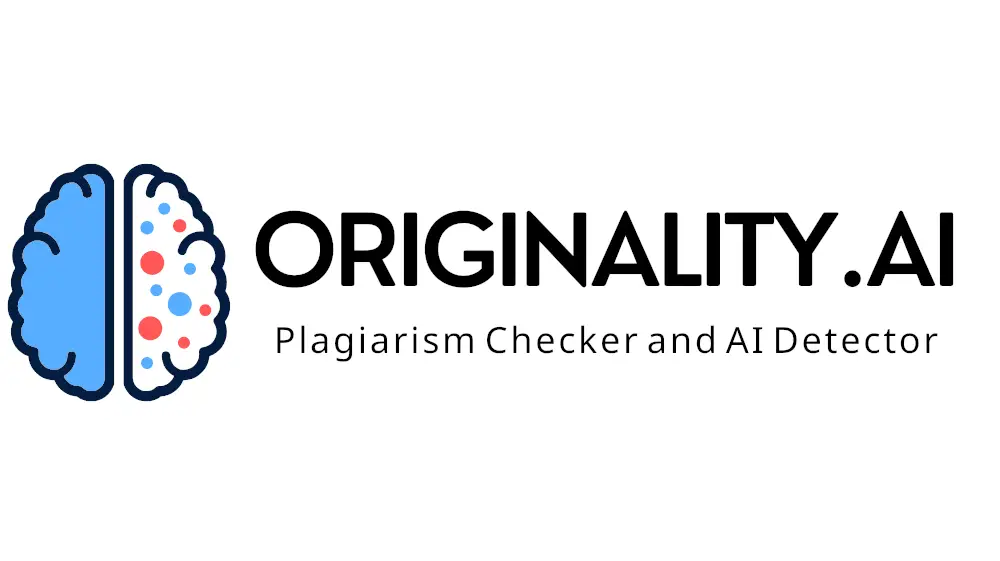
Originality AI is an AI-powered tool designed to assess the originality of text content. It’s particularly useful in academic settings, where originality of thought and content are paramount. This tool can help identify AI-generated content by comparing it to known human-produced content databases.
Turnitin AI Detection Tool
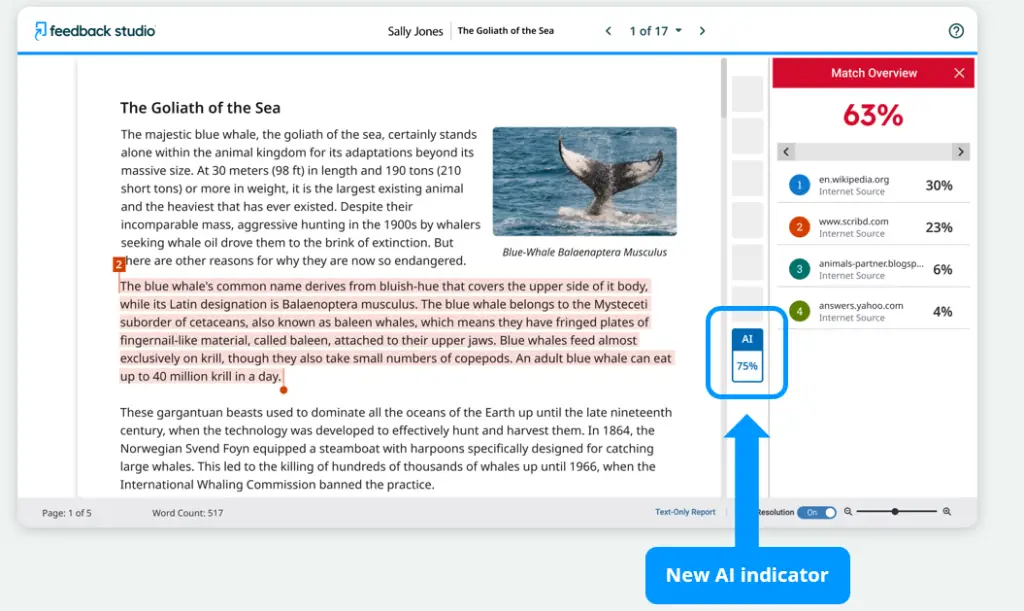
Turnitin is widely known for its plagiarism detection capabilities. However, it has also incorporated AI detection into its suite of tools. It uses machine learning algorithms to identify patterns typical of AI-generated content, distinguishing them from those found in human-written text.
Contentatscale AI Detector
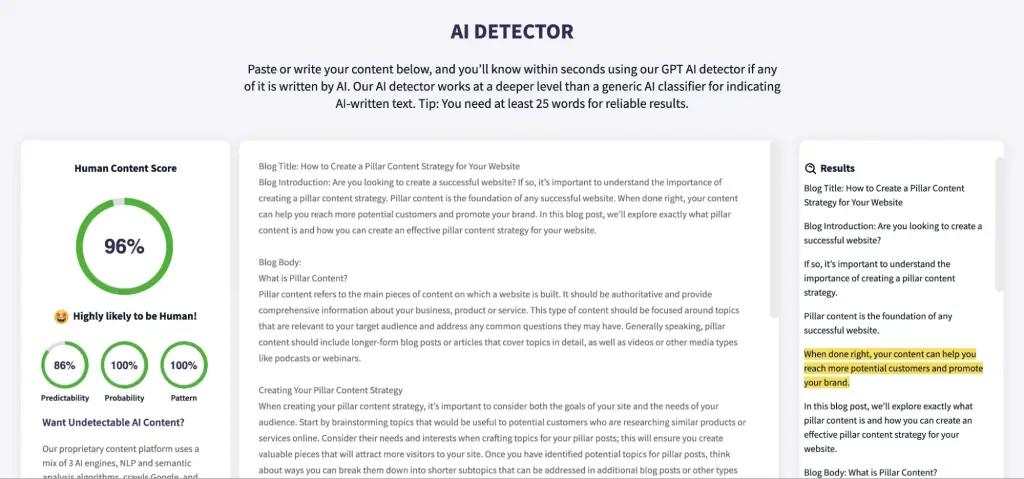
Contentatscale AI Detector is a machine learning-based tool designed to detect AI-generated content. It works by identifying patterns and intricacies typical of machine-written content, helping users differentiate between human and AI-generated content.
HuggingFace AI Detector
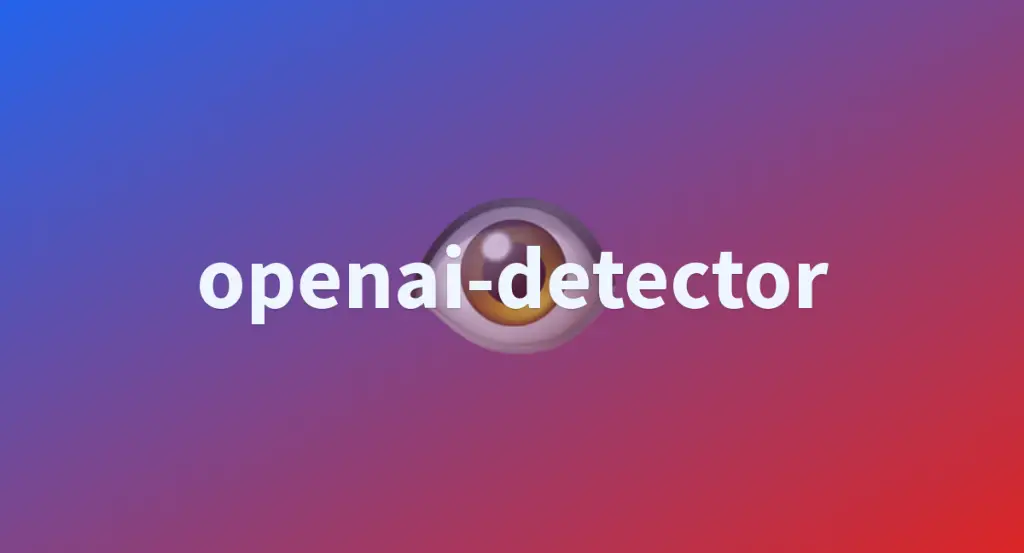
HuggingFace, a company known for its extensive work with natural language processing (NLP) AI models, also offers a tool for detecting AI-generated content. It leverages its deep understanding of NLP models to distinguish the subtle differences between human and machine-written text.
ZeroGPT
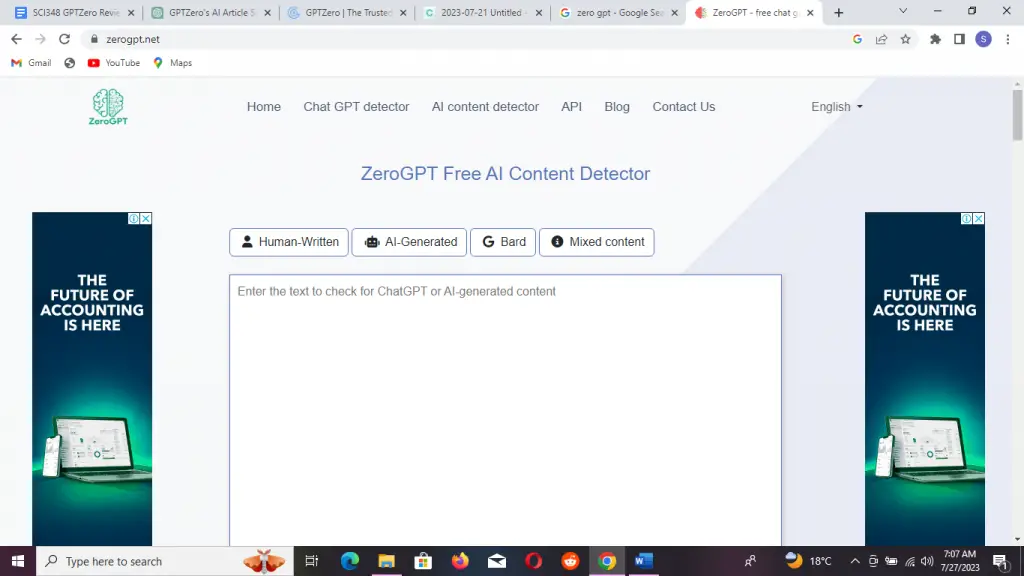
The Zero GPT Detector, like OpenAI’s GPT-3 Detector, is a language model-specific tool. It’s designed to identify content produced by the Zero GPT model, making it a highly specialized tool. Its effectiveness might vary when dealing with content from different AI models.
Copyleaks AI Detector

Copyleaks is primarily a plagiarism detection tool but has extended its capabilities to include AI content detection. It uses advanced AI and machine learning technologies to identify patterns in text that are indicative of AI-generated content.
OpenAI’s GPT-3 Detector
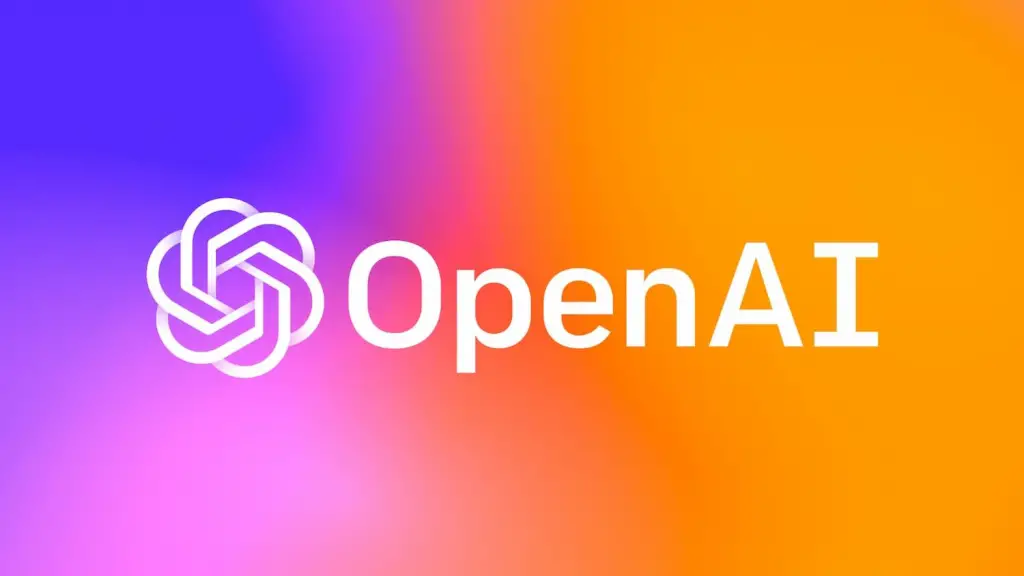
Formerly, OpenAI provided a detector for its own GPT-3 model, designed to identify GPT-3 generated content. However, it’s worth noting that OpenAI has recently discontinued this tool due to poor results.
While it was specifically aimed at detecting GPT-3 generated content, its performance was inconsistent and it often struggled to accurately identify content generated by other AI technologies. Therefore, users are advised to seek other alternatives for reliable AI content detection.
Read more on the best AI Content Detection Tools here.
XIII. What are the Factors to Consider When Choosing an AI Content Detection Tool?

Here are the factors you should consider before settling on an AI content detection tool:
Accuracy and Reliability
One of the most crucial factors to consider when choosing an AI content detection tool is its accuracy and reliability. The tool must have a high level of precision in distinguishing between AI-generated and human-authored content. It should consistently provide reliable results to instill confidence in its effectiveness. Users should look for tools that have been rigorously tested and validated through various datasets and real-world scenarios.
Adaptability and Scalability
AI technologies are constantly evolving, and new AI writing models are regularly introduced. Therefore, it’s essential to select a content detection tool that can adapt and keep up with these changes. An ideal tool should be designed to be scalable and flexible, allowing for seamless integration of new AI writing patterns and technologies.
User-Friendly Interface
The usability of the AI content detection tool is another important consideration. It should have a user-friendly interface that makes it accessible to a wide range of users, including researchers, educators, students, and content creators. A well-designed interface will simplify the process of verifying content authenticity and enhance the overall user experience.
Speed and Efficiency
In today’s fast-paced digital world, speed and efficiency are paramount. The AI detection tool should be capable of processing content quickly and delivering results in a timely manner. Users should not have to wait for extended periods to verify the authenticity of a piece of content.
Language Support and Multilingual Capabilities
Content on the internet is available in multiple languages, and AI-generated content can be produced in various linguistic styles. A robust AI content detection tool should have excellent language support and be capable of analyzing and detecting AI-generated content in multiple languages.
Privacy and Data Security
AI detection tools may require users to upload content for analysis. Therefore, privacy and data security are vital considerations. The tool should have strong data protection measures in place to ensure that sensitive information remains confidential and is not misused.
Cost and Accessibility
The cost of implementing an AI content detection tool is a practical consideration, especially for academic institutions and individual users. It’s essential to evaluate the tool’s cost-effectiveness and consider whether it aligns with the budget and resources available.
Customer Support and Updates
Selecting a tool with a reputable provider that offers excellent customer support is crucial. Users may encounter issues or have questions while using the tool, and prompt and helpful customer support can make a significant difference in resolving concerns efficiently.
Additionally, a provider that regularly updates the tool with improvements and new features ensures users stay equipped with the latest advancements.
XIV. Final Verdict
This review has provided a comprehensive look at GPTZero, examining its features, benefits, limitations, and how it compares to other AI detection tools. It has also shed light on the positive user experiences and their crucial role in academia.
In my opinion, GPTZero lives up to its promises, effectively detecting AI-generated content with high accuracy. While it has some limitations, the benefits outweigh the drawbacks, making it a worthy investment, particularly for academia.
As with any tool, the best way to appreciate GPTZero is to try it. I encourage readers to test this tool, explore its functionalities, and see firsthand how it can enhance your content verification process.
Read on to learn more about AI content creation tools available today.
Frequently Asked Questions
Q1. What is GPTZero?
GPTZero is an advanced AI content detection tool designed to distinguish between AI-generated and human-authored content.
It utilizes state-of-the-art machine learning algorithms and extensive training with diverse datasets to accurately identify content created by AI models like GPT-4 and similar language models.
GPTZero’s primary purpose is to help users verify the authenticity of digital content, ensuring transparency and trust in an era where AI-generated content is increasingly prevalent.
Q2. Who developed GPTZero?
GPTZero was developed by Edward Tian, a talented student from Princeton University. His innovative work in creating this AI content detection tool showcases the potential for young researchers to make significant contributions to the field of artificial intelligence.
Q3. Does GPTZero actually work?
Yes, GPTZero has proven to be effective in detecting AI-generated content. Its accuracy is achieved through robust machine learning algorithms and extensive training with diverse datasets. While no AI detection tool can be perfect, GPTZero’s performance has demonstrated its potential in identifying AI-authored content.
Q4. Is GPTZero free?
Yes, GPTZero is entirely free to use. Unlike many other AI content detection tools, GPTZero does not have any premium subscription plans or paid features. Its creator, Edward Tian, has made the tool accessible to all users without any financial barriers, promoting equal access to AI technologies.
Q5. How do I use GPTZero?
Using GPTZero is simple and user-friendly. Users can access the tool by visiting the GPTZero website. There is no need to create an account or subscribe to any plan. To verify the authenticity of a piece of content, users can copy and paste the text or upload a file into the tool’s interface. GPTZero will then process the content and provide a report indicating the likelihood that the text is generated by AI.


